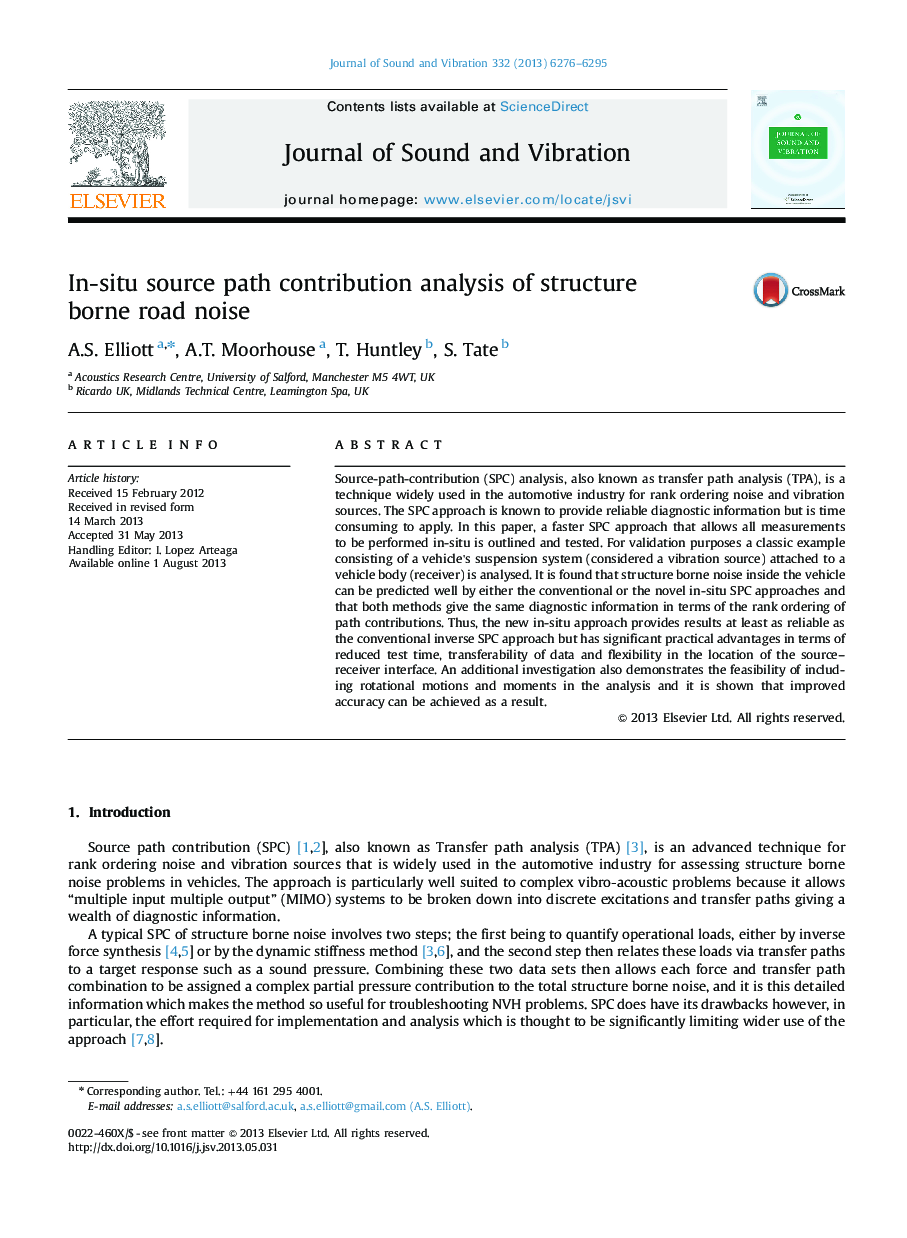| Article ID | Journal | Published Year | Pages | File Type |
|---|---|---|---|---|
| 287708 | Journal of Sound and Vibration | 2013 | 20 Pages |
•A new approach to source path contribution/transfer path analysis is outlined and validated.•In-situ source path contribution (iSPC) is found to be around 50 percent faster than conventional SPC.•iSPC and SPC are found to be similarly reliable and deliver the same noise path rank ordering.•Rotational motions and moments are included in the SPC and iSPC analyses.•iSPC is faster than SPC but with no cost in terms of reliability.
Source-path-contribution (SPC) analysis, also known as transfer path analysis (TPA), is a technique widely used in the automotive industry for rank ordering noise and vibration sources. The SPC approach is known to provide reliable diagnostic information but is time consuming to apply. In this paper, a faster SPC approach that allows all measurements to be performed in-situ is outlined and tested. For validation purposes a classic example consisting of a vehicle's suspension system (considered a vibration source) attached to a vehicle body (receiver) is analysed. It is found that structure borne noise inside the vehicle can be predicted well by either the conventional or the novel in-situ SPC approaches and that both methods give the same diagnostic information in terms of the rank ordering of path contributions. Thus, the new in-situ approach provides results at least as reliable as the conventional inverse SPC approach but has significant practical advantages in terms of reduced test time, transferability of data and flexibility in the location of the source–receiver interface. An additional investigation also demonstrates the feasibility of including rotational motions and moments in the analysis and it is shown that improved accuracy can be achieved as a result.
